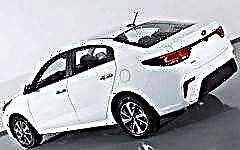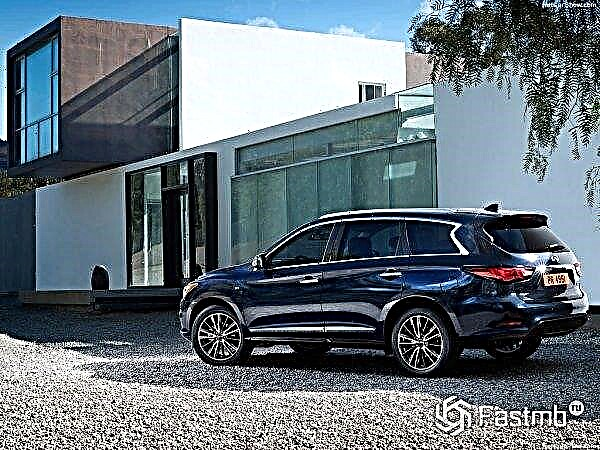Nowadays, people are more likely to switch to economical cars or even bicycles. Consider a cyclist warning system.

The content of the article:
- A little about the system
- What does the notification system consist of?
- Principle of operation
- Examples of situations
Modern cars are trying to be stuffed with a variety of functions and systems; active safety systems are gaining more and more popularity. Camera, radars will allow you to monitor the surrounding space and easily park. Other systems will help protect the driver from different situations.
What is Bike Sense System

One example of recent innovations is the Cyclist Warning System, or better known as SBS (System Bike Sense). In the event of a potential collision with a cyclist, it will notify the driver in all possible ways and activate the car's systems to avoid a collision.
This system was developed by Jaguar Land Rover. The system is based on sensors, radars and a control unit. If a cyclist is recognized, such systems as emergency braking, audible alarm, vibration on the door handle or steering wheel will also be activated.
Components of the warning system

As already mentioned, the system is warning, that is, the last decision will be for the driver of the car. Its cyclist warning system includes electronic sensors and sensors, input control devices, actuators and a control unit.
Bike Sense actuators include:
- alert;
- inflatable rollers on the driver's back;
- vibration mode of the accelerator pedal;
- vibration mode of the inner door handle;
- LED illumination of elements of the car interior.
The control unit is a small box with a control board. It processes the received data from the sensors and, based on the result obtained, issues commands to the actuators.
As you can see, the system combines several components, which indicates the complexity of its work.
How Bike Sense works

Everything starts from the input devices, the average speed of a cyclist of 15 km / h and an acceptable shape of the cyclist are taken as the recognition criterion. The system can adjust the silhouette by recognizing with or without a helmet or other elements that may change.
The maximum recognition distance is 10 meters; at a greater distance, the system may produce incorrect data. Therefore, the recommended vehicle speed for the correct operation of the Bike Sense system is up to 60 km / h.
The camera and sensors read the information and transmit it to the control unit. He, in turn, processes the information received and, if he recognizes the cyclist, then transmits the information to the executive devices. If nothing is found, it returns to standby and recognition mode. Activation of executive devices begins if the cyclist is at a distance of 5 meters from the car. Depending on the circumstances on the road, the system automatically decides which actuators to turn on and how to correct the vehicle's path.

To warn the driver about safety, the first sound signal is used in the form of a bicycle bell, since the first thing the driver will associate with such a sound is a bicycle. Depending on which side the cyclist is on, the sound will be delivered to the speakers from that side.
We mentioned above that there are also vibration sensors. So, on the gas pedal, a vibration signal is used when the car starts unwantedly from a place, when a cyclist is nearby, especially in the blind zone of visibility. The signal will inform you that there is an obstacle nearby by giving an additional sound signal.
The door handle will vibrate if the driver tries to open the doors, while the cyclist will move within the range of the Bike Sense system. As a result, such signals will alert the driver and prevent injury to the cyclist.
The most interesting thing is the use of bolsters in the driver's seat. If a cyclist is detected near the car, the rollers will inflate and press on the driver's shoulder. According to which side the cyclist will be, the roller will work on that side. On the right side - the right roller, on the left - respectively the left one.
The LED lighting integrated in the A-pillars, the upper section of the instrument panel and the interior door trim can illuminate in red, yellow and green. Depending on the degree of danger of collision, the color will change, red in the most dangerous situation, yellow in case of possible danger, as they say 50/50, green when the situation is under control.
Envisaged collision situations

After knocking down the statistics of car accidents with cyclists, the experts identified and taught the system different tricks and signals to warn the driver. As an example, consider the three most common situations. The first is when a cyclist approaches from behind while the vehicle is moving. In this case, the Bike Sense system will give an alarm from the side of the cyclist's movement, then inflate the roller on the corresponding side, and the LED backlight will indicate the distance and the degree of danger.
The second variant of events is when a cyclist or pedestrian approaches transversely relative to your car and the one in front of you. The system will give an alarm in the form of a bicycle bell, and the accelerator pedal will vibrate when the car starts off prematurely.
The third situation is when a cyclist approaches behind a standing car, and the driver or passenger of the car tries to get out of the car by opening the door. The system will determine this as the most dangerous situation, and will give an audible and LED signal from the side of the danger. Plus the vibration of the inner door handle will be added to this.
Having considered the principle of operation, we can say that the system can largely help inattentive drivers or simply in unpredictable situations. Still, the last decision will be made by the driver or passenger of the car regarding the Bike Sense system warnings. Cyclists should be reminded that despite the perfection of vehicle systems, they should always be careful on the road.











